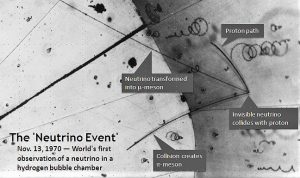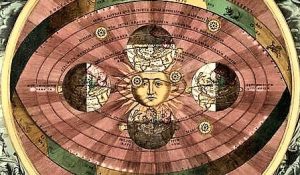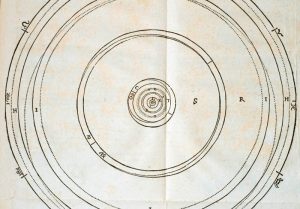M Theory
M theory is the name for a unified version of string theory that was proposed in 1995 by physicist Edward Witten. At the time of the proposal, there were 5 variations of string theory, but Witten proposed the idea that each was a manifestation of a single underlying theory.
What is M theory?
The M theory or super-string theory is the one that determines that all elementary particles are made up of the same type of energy filament but that each of them has different vibrations.
Who proposed the M theory?
The M theory was proposed in its beginnings by Edward Witten. Witten’s proposal was combined with the five theories of super-string and super gravity in eleven dimensions that already existed before. It has its origin based on string theory, according to which all particles are tiny strings that vibrate at a certain frequency. According to this proposal, particles are strings vibrating at a certain frequency in a space-time that requires at least ten different dimensions.
Backgrounds
Many years ago, mainly during the 19th century, the atom was believed to be the smallest particle of matter and the universe. It was long regarded as the basic and indivisible element of matter.
In the early years of the twentieth century, it was found that this atom had a series of smaller components that were called protons, neutrons and electrons, and that would be known as subatomic particles.
In the 1980s, it was discovered that protons and neutrons were made up of small particles called quarks. Quantum theory is the set of rules that describe the interactions of these particles.
Then, in 1980, a new type of mathematical model called string theory was consolidated which suggested that all particles and forms of energy in the universe could be hypothetically interpreted as “strings” or one-dimensional objects, which were perceptible at scales of length comparable to Planck’s length.
String theory said that the universe was made up of multiple spatial dimensions, compacted and perceptible on a very small scale. Strings vibrate in multiple dimensions, and according to how they vibrate, they could then be perceived in three-dimensional space as matter, light, or gravity.
In the mid-1990s, Edward Witten, a string theorist, considered that the five different versions of string theory were the same in different perspectives and proposed unification into a theory called “M theory,” in which the letter “M” is not specifically defined, but is understood as “membranes.
History
The M theory bases its history on the String Theory, from it, Dr. Edward Witten proposed the famous M theory, a unifying theory that could explain the whole Universe by interpreting the four forces of our Universe: gravitational, electromagnetic, strong nuclear and weak nuclear.
Explanation of the M theory
String theory, super-string or M theory, is the unification of all theories that relate to the four forces of nature.
This theory was developed by and to explain the strong nuclear force, but there was a much more relevant theory. The M theory is in charge of describing the universe with 11 dimensions. Of these spatial dimensions we have, one dimension is time and 6 dimensions are compacted in a Calabi-Yau space.
The M theory also postulates the existence of branes because according to it, the universe where we live is in a 3-dimensional brane, which would be found among other branes, side by side. The theory says that all matter is made up of open strings, and that it would be confined to our own brane universe. The branes would be next to each other, within a hyperdimension or bulk.
Branes would not be fixed but would be undulating and have movement. When 2 branes touch, a Big Bang would be produced and another Brane universe would be formed, expanding in opposite directions. Eventually, the branes could be touched again, and the cycle would begin again.
Characteristics
The main features of M theory are as follows:
- The M theory is much more than simple strings.
- It contains larger objects as well as smaller objects.
- The objects of string theory are called P-branes where P denotes their dimensionality or D-branes.
- Larger objects were always present in string theory but could never be studied before the Second Super-string Revolution because of their non-disturbing
- It is suggested that the Big Bang was caused by the collision of two of these membranes, from which our Universe was born.
What problems does the M theory present?
One of its problems is that the initial theory needed the existence of a multidimensional space, and our Universe only has four dimensions which are the three spatial ones and time. It was thought then that the dimension was very small in size and that it was rolled up or compacted.
The second problem with string theory was that it only worked for some types of particles, bosons; fermions like quarks, electrons and other interesting particles were then left out.
Importance
M theory is important for a better understanding about the universe and humanity. The impact of science also encompasses culture. The main objective of the theory is to unite the laws of quantum mechanics that refer to the laws of the “small” with the laws of general relativity that are basically the laws of the ” big “, in a same mathematically consistent framework. This is vital because in the standard formulation the union of quantum mechanics and general relativity leads to mathematical inconsistencies.
How to cite this article?
Briceño V., Gabriela. (2019). M Theory. Recovered on 3 January, 2025, de Euston96: https://www.euston96.com/en/m-theory/










